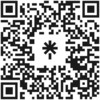Submissions
Copyright Notice
Regarding the copyright of the contributions (i.e. articles or others) published or sent to Culturas Científicas, it will be understood that the authors accept the following terms at the time of submitting:
-
The authors will retain the rights of the contributions they submit to Culturas Científicas.
-
The authors accept that their contribution is subject to the Creative Commons Attribution 4.0 International License (CC BY 4.0) once it is published.

This means that the published contribution may be shared and adapted—even commercially—as long as proper credit is given and no endorsement by the author (i.e. licensor) is implied.
-
Notwithstanding the foregoing, at the time of accepting their contribution, the authors grant its first publication exclusively to Culturas Científicas.
-
Once the contribution is accepted, the authors grant to Culturas Científicas the rights of reproduction and distribution of their article in all countries of the world for their exploitation in any medium, format or support.
-
The authors may adopt other non-exclusive license agreements for the contribution published by our journal (e.g. deposit in archives, publication in other journals, book compendiums or translation) committing to indicate that the original publication was made in Culturas Científicas or publishing the version that already has the identifiers of our journal.
We encourage the authors to spread their articles through the internet in sites designated for it in order to motivate their reading and discussion.
Privacy Statement
Culturas Científicas collects the names, emails and other relevant data of its authors, reviewers and readers in two ways: either by completing the registration on our official site or by signing up for our newsletter.
The journal ensures that the names, email addresses and all other personal data received will be used exclusively for the stated purposes of the journal. Among the latter are contemplated the dissemination of new issues, calls, their extensions, or special events. The information received will not be provided to third parties in any way.
It is worth mentioning that users can unsubscribe from the notification system whenever they want without ceasing to be a user of the journal. If you have problems or doubts about the process, you can write us to revista.culturascientificas@usach.cl










